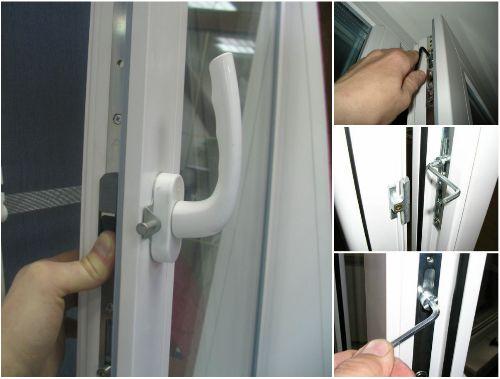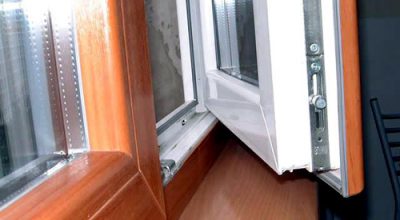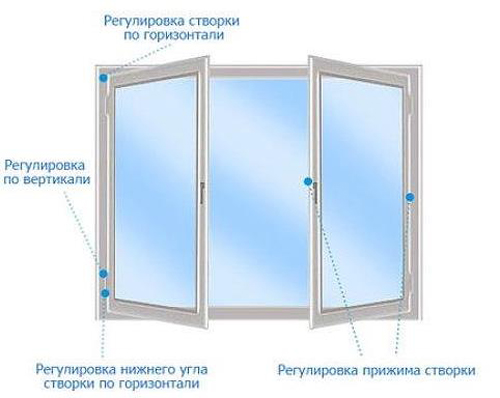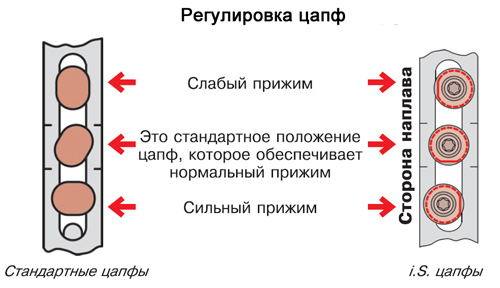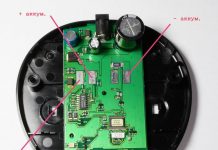VIDEO
Plastic windows are good for everyone, but without certain knowledge, their maintenance is impossible - they are controlled by complex fittings, and there are many little things that their owner is simply unfamiliar with. Many breakdowns - a broken handle, replacement of a seal and a number of others - can be easily eliminated with your own hands. Such repair of plastic windows does not require a call from a specialist. How to eliminate the most common "sores" of PVC windows, we will consider further.
If PVC windows are not timely adjusted and lubricated, they will close worse and worse. It happens smoothly and imperceptibly. It's just that you constantly have to make more and more efforts to close or open the sash. Often they only remember after the handle on the plastic window has broken. Then you have to repair plastic windows. But a broken pen is not the biggest problem. The job is very simple. The only difficulty is that before you change the handle on the plastic window, you have to buy it. They are sold in a store that sells plastic windows and accessories for them. They differ only in shape, color and price, but they are universal. So you can't go wrong. There are, however, also handles with a lock. They will come in handy in families with children: you can open the window only if you have a key.
Plastic window handles differ in shape and color
Having a new handle, you can start replacing the broken one. If you look closely, you will see that the base of the handle is in two parts. You need to grab the upper part with your fingers, pull it towards you and turn it "clockwise" or "counterclockwise".
The upper part of the handle base must be pulled and rotated
There are two screws hidden under the plate. We unscrew them, pulling them towards ourselves, take out the handle. All this is easy - no significant effort is required.
There are two screws under the plate
We put a new one in place of the old handle, fasten it with the same screws (the plate moves in the same way) and put the plate in place, check the work. That's all. The replacement of the handle on the plastic window is complete.
Not everyone has a micro-ventilation function on PVC windows. In order not to open the sash completely, it is propped up with something heavy. To do without such supports allows the limiter for opening a plastic window. This device consists of two parts - a strip with notches and a pin. Due to its characteristic shape, the stopper is called a comb, retainer or crocodile. This is no longer the repair of plastic windows, but their modernization, but this operation can be easily done with your own hands.
This is what the PVC window opening limiter looks like
To install the comb on a plastic window, you must first remove the handle on the sash that you will use for airing (as - see above). A retainer is put on the removed handle (look at the photo). It is turned so that it sticks out of the window sash.
How to put a restrictor on a PVC window for ventilation
The handle with the lock is set in place. Now you need to screw on the locking bar. It will require two small self-tapping screws and a drill with a 1.5-2 mm drill.
Ventilation limiter for the plastic window installed
We place the bar on the window frame so that it "clings" to the protruding stopper. First, we apply, check if it works normally, put marks in those places where holes need to be drilled. Drill carefully so as not to drill through the frame. Next, we fasten the bar. That's it, the comb (retainer) is installed on the plastic window.
One of the most common problems is blowing around the sash. There are several methods of treatment. First, it is necessary to increase the clamping of the sash, which is done by adjusting the pins. If it does not help, it is possible that the seal has become inelastic and does not provide a tight seal. Then the repair of plastic windows consists in replacing the sealing gum. It is installed around the perimeter of the sashes and on the PVC window frame and needs regular maintenance. In autumn and spring, it must be washed, dried, lubricated with silicone grease. But even under such conditions, over time, it loses its elasticity, it may even crack or tear. It is very easy to change the seal on a plastic window, but first you need to buy a suitable one. The fact is that it has a different profile for different manufacturers (see photo).
Forms of seals for porch and double-glazed windows of different companies
The use of a seal of a different shape does not guarantee the proper degree of thermal insulation. If you do not remember which company you have windows, you can take the removed seal with you. So you definitely can't go wrong. So this time too, the repair of a plastic window begins with a trip to the store.
Please note that the seal must be whole - one piece. Composite of two or more pieces do not give normal tightness.
First, remove the old gum. You can simply pull it with your fingers. If it doesn't work, pry it off with something thin and sharp. It will come out easily. Then, dust that has accumulated there will be removed from the groove.
Laying the new seal begins from one of the corners. Bring a new rubber band to the groove, insert, pressing down with your fingers. It takes some effort, but not prohibitive. It will be more difficult in the corners. Here we must try to lay it out evenly so that it does not wrinkle, but does not stretch either.
Install the seal from one of the corners
Once the seal is installed around the entire perimeter, it can be cut. This is done with sharp scissors, and the joint is glued with good glue for rubber. This is how it is easy to change the seal on PVC windows. Such a do-it-yourself repair of plastic windows takes at most 20 minutes.
To replace the seal on the sash, it must be removed. For this, decorative caps are removed from the hinges. They need to be pulled or pushed up, sometimes towards yourself. Next, we begin to remove the sash. Just keep in mind that it is much heavier than it seems. Get ready to take on a lot of weight. If there is one of the assistants, it is better that they insure. Actions are as follows:
With your left hand, hold on to the sash from below. It will carry almost all of the weight, so be prepared.
We will work with the upper loop. We need to take out the metal rod that holds the sash. It protrudes a few millimeters at the top.
Upper hinge on which the sash is held
We take an ordinary screwdriver (flat, not Phillips), press down on the pin. It protrudes a few millimeters below. Insert a screwdriver into the resulting gap and squeeze the rod even lower. Now you can grab it with your fingers (pliers) and pull it down.It is not necessary to fully pull it out, pull it all the way (you will feel resistance).
How to remove a plastic sash from its hinges
Now we grab the upper corner of the sash with our right hand (left at the bottom), slightly raise the sash, simultaneously feeding it slightly "towards ourselves", remove it from the lower rod. That's it, the sash is free.
This is the bottom pivot of the sash. He's mobile
Further, the process of replacing the seal is similar: we take out the old one, wipe the groove from dust, dry it, insert a new seal. Just before putting the PVC window sash in place, the pin of the lower hinge must be cleaned and greased. This simple maneuver - with cleaning and lubricating the pin - allows you to get rid of the annoying squeak that is heard when opening and closing a plastic window or door.
When installing the sash of a plastic window, the procedure is reversed:
We put the flap on the lower pin.
We set it vertically, aligning the upper loop.
Finger (with a screwdriver blade) press on the rod until it pops out from above.
That's it, the sash of the PVC window is put in place, the repair of the plastic window is finished. The process is simple, but for better assimilation, watch the video.
VIDEO
It is sometimes necessary to disassemble a plastic window to replace a double-glazed window - the glass cracked or broke, it became leaky (condensation settles between the glasses). Sometimes it is necessary to change the rubber seal, which is located along the perimeter of the glass from the side of the room and the street. Over time, it loses its elasticity, and begins to blow from under the glass. For all these works, the double-glazed window must be removed.
The glass unit is held in the frame by glazing beads - thin plastic strips. To remove the glass unit, they must be removed. There are four shtapiks on each double-glazed window - two long vertical, two short, horizontal. We start shooting with long ones.
To work, you need a spatula with rounded corners or an old knife with a thick blade, some other similar tool. This tool is inserted at an angle into the gap between the glazing bead and the frame.
There is a small gap between the glazing bead and the frame. We put the edge of the tool into it
Turning the blade slightly to the right or left, detach the glazing bead from the frame. It locks into the groove, and when pressed, it is quite easy to separate. Swiping the tool up and down, we separate it at a greater length. Now, grasping the glazing bead with your hand, you can easily remove it. We carry out the same operation with the second vertical and horizontal strips.
VIDEO
To prevent the glass unit from falling out, it is better to remove the upper glazing bead last. In this case, you slightly need to hold the glass with your hand (just keep in mind, they have a solid weight). Slightly pulling the glass towards you at the top, take it out of the frame.
A new or refurbished glass unit is installed in the reverse order. First, pads are exposed - rubber plates that soften contact with the frame. Expose the glasses, aligning them relative to the center - the gaps on the right and left should be equal.
Glazing beads are installed in place. But this time, they put the top one first, then the bottom one, then the side ones. The procedure for installing glazing beads is as follows: we put one edge into the groove, we start the second edge. We knock in the middle with the palm of our hand until it clicks.
VIDEO
Sometimes the repair of plastic windows also includes glass replacement. This is much more difficult. First of all, you need glass, cut strictly to size. You can, of course, cut it yourself, and then process the edge so as not to get hurt. You can also order glass from the workshop, asking for the edges to be sanded.
Then the glass unit is removed from the frame of the plastic window, laid on a flat surface. It is more convenient on the table, but also on stools. If you will be working on the table, cover it with something.
Then, with a sharp knife (you can use wallpaper), the silicone is cut along the perimeter. Then the damaged glass is finally separated from the glass unit and removed. In its place, a new washed to a shine is laid, leveled. It should match up to a millimeter in size.
Next, we cover the glass with silicone sealant (not acrylic).We insert the tube with the sealant into the construction gun, go along the perimeter of the glass, making sure that the seam is filled evenly. We are waiting for the silicone to dry, then we take an adhesive tape 40 mm wide, glue the glass unit around the perimeter. The glass in the double-glazed window has been changed, you can put it back.
VIDEO
Sometimes the plastic window fittings do not work correctly. When this happens the first time, the window appears to have broken, although it usually isn't. This situation cannot even be called a repair. You just need to return everything to working condition.
Sometimes in some position the handle of a plastic window "gets stuck" and does not want to turn. Usually the reason is the blocker being triggered. This is the plate that sits near the handle on the side of the frame. The shape of the plate is different for different manufacturers of accessories.
Types of blockers on PVC windows
To correct the situation with the handle, it is necessary to return the blocker to its normal position. If it is in the form of a long plate, pressing on the movable part, it is placed vertically, then the handle is turned. Then everything should work fine. Sometimes a plastic window blocker looks like a small tongue. We also press on it, turn the handle to the required position.
If this "treatment" does not help, you need to check whether the blocker enters the counterpart (pictured above). Sometimes, due to heat or cold, inconsistencies begin. If the tongue does not reach the mating part, you need to move it a little closer. The counter plate is unscrewed (there are two bolts), a plate the size of the counterpart of the blocker is cut out of white thin plastic, and it is installed between the frame and this plate. If the plastic sticks out somewhere, it is carefully trimmed with a sharp knife. The window should now close.
This situation occurs if the window is simultaneously opened in tilt and tilt modes. Do not panic, leaving the sash open, press the upper edge against the frame. Aligning the upper edge with the hinge, turn the handle to the "open" position - horizontally. If it does not turn, turn off the blocker.
Plastic window hardware worked incorrectly
We close the sash, turn the handle down to the “closed” position. We slowly check the work in all positions. There are still a lot of nuances associated with blowing from under the window, but they are all solved mainly by adjusting, and how to adjust a plastic window is written here.
We have described the most common problems with plastic windows, which can be solved on your own without involving specialists.
Modern PVC, metal-plastic, wooden windows are manufactured using reliable and massive fittings, which ensure high-quality trouble-free operation during the long service life of the window. However, it, like any other mechanism, requires adjustment and maintenance from time to time. Thanks to the well-thought-out design of the fittings, adjusting the windows with your own hands does not take much time and requires minimal effort. It is important to know where the main settings are located and to have the required tool available.
Actually, for all possible work on setting up windows, you will need the following tools:
hex key 4 mm;
a set of star-shaped screwdriver nozzles (marked T, TX);
Regular Phillips screwdriver size 3 or 4
pliers or pliers;
machine oil or WD-40 aerosol.
Basically, a hex key is used for tinting, which is also often called a furniture key. The shape of the key can be in the form of the letter "G" or something similar. The installer uses a slightly modified key, which has another small bend on the upper smaller part for convenience, but a standard one will do.
Star-shaped attachments are only needed in a few hardware models, but it's better to have them close at hand. For fastening the hardware itself to the profile, screws for a Phillips screwdriver are used.So, for example, to replace a door handle or adjust it, you will need it.
Everything is much easier when it is necessary to adjust the sliding windows. In this case, all work comes down to setting the distance of the roller carriages on which the movable sash is mounted.
To begin with, it is worth considering situations in which you need to adjust plastic windows with your own hands, and also list the necessary steps to troubleshoot. After that, we will take a closer look at the hardware adjustment mechanisms themselves. For more understanding, you can refer to the detailed descriptions of window fittings manufacturers. Basically, there are now such accessories manufacturers as veka, roto, rehau, maco on the market. There is a difference in settings between their products, but they are mostly similar, so it makes no sense to describe each of them separately.
To eliminate this problem, it is enough to tighten the handle mount. This is the simplest operation that can be done. Under each handle there is a rectangular overlay, most often the long side vertically. It is she who should slightly pry on the upper and lower edges with your fingers and turn the entire element 90 degrees. Under it are two Phillips head screws that need to be tightened. It is not worth prying the plastic plate covering the bolts with a screwdriver or other tool, because you can damage or scratch the surface of the profile, as well as inevitably deform the edge of the plug itself.
In children's rooms, handles with a protective mechanism will be very useful, which will not allow a small child to open the window on their own. In order to remove the old handle, you will need to unscrew the cap and unscrew the two bolts in the same way as in the last paragraph. After that, lightly shake the handle in the connector and gently pull it out. Insert the new handle in the same position as the old one and fasten with the bolts.
VIDEO
This is a broader problem and has several possible causes. First, it is likely that the handle mechanism and the rest of the hardware require cleaning and lubrication with machine oil. Secondly, if the handle reaches the end of the closed state with great effort, then it is worth weakening the clamping force on the sash.
In order to lubricate and clean the door handle, you must first dismantle it. After that, using a brush and a vacuum cleaner, clean the mechanism from possible dirt. You can use a little glass cleaner, just do not overdo it so that the excess does not remain inside the profile. After that, all that remains is to lubricate all moving parts and assemble the handle back. It is easiest to use the WD-40 with a tube as a nozzle for lubrication. With it, you can fully open the parts with a protective layer of oil. Oil or aerosol should be used every time PVC windows are adjusted.
When the handle is tightly closed all the way, the clamping force should be slightly reduced. For this, there are special eccentrics on the side of the handle, as well as adjustment bolts on the hinges on the other side, at the end of the window sash. More details about this will be written below in the setting of the clamping mechanism.
Nothing terrible happens in this case, and there is no need to replace the fittings or the handle, there is no need to even remove it. This problem occurs due to incorrect operation of the locking mechanism, which does not allow changing the position of the window in the open state. To solve the problem, you should independently release the blocker lever and release the movement of the handle. The locking lever is located at the end of the sash from the handle side. By design, there are two types of execution: a plate in the form of a tongue (lever), which, when the sash is open, is retracted at an angle in relation to the sealing rubber and screwed directly to the end, as well as a version in the form of a clip that fits onto the sealing rubber.
VIDEO
Over time, the sealing gum around the sash perimeter may lose some volume and thus gaps are formed. As a result, the tightness suffers, air begins to pass through and the sound insulation of the window deteriorates. It can also occur due to thermal deformation of the window at different times of the year. In order to eliminate this problem, there is no need to replace the seal. The hardware design provides a simple and reliable way to adjust the window hardware, including the clamping force.
Changing the downforce should be done twice a year, especially if the outside temperature is too low in winter and high in summer. This will reduce stress in the hardware design and increase the life of the rubber gasket.
At the end of the sash there are protruding cylinders of a slightly oval shape, located in the slots of the metal plugs, and are called pins (eccentrics). There are reciprocal hooks on the frame, into which these hooks go when the handle is turned and the sash is pressed against the frame. Force adjustment can be done by scrolling the eccentrics or moving the counter hooks.
In order to adjust the sash closing, the more protruding part of the eccentric should be turned towards the inner surface of the window, for weakening - towards the outside. Depending on the manufacturer of the fittings, the ways of adjusting the eccentrics and counterparts may differ:
there is a slot on the eccentric and use a slotted screwdriver (flat) to turn;
the trunnion is retracted with pliers or by hand from the end surface and scrolls;
applying a little effort, the eccentric turns with the pliers.
You should check the possibility of setting in the same order as the methods of execution are indicated. Because if you try to scroll the part with the pliers in the second version, you can damage the mechanism of its fastening.
If the cylinders at the end cannot be adjusted, then the position of the counterpart should be changed. In this case, it is fastened with two hexagon head bolts. By loosening the bolts, you can move the hook towards the room to reduce the pressure and towards the street to strengthen it.
Once the downforce on the handle side has been weakened or increased, you can move to the awning side. It is worth considering the option of a sash with a fanlight system, which allows you to open a window in ventilation mode. For adjustment, it is necessary to remove the plastic cap of the casing from the lower canopy. In the canopy itself there will be two visible hex bolts and one hidden one, with which you can change the position of the sash in relation to the frame. To adjust the tracking force, you need a bolt that protrudes perpendicular to the plane of the window. It is better to adjust it with the sash closed. Insert the hex wrench into the head of the bolt and turn clockwise to tighten and counterclockwise to loosen the pressure.
The upper part of the sash is not attached to a canopy, but to a structure called scissors. Swing open the window sash to access the required adjusting bolts. Find on the side end on the side of the handle a lever or a locking clip (they are located at an angle to the seal and spring) and press it. When the lock is pressed, turn the sash handle to the ventilation position. The sash will come out of the groove at the upper corner and hang on the scissor mechanism and the lower canopy. So you can get to the head, with which you can adjust the pressure of the upper part of the sash. It is located on the underside of the lever holding the sash and in the normal position comes to the end. By slightly turning the head of the bolt, the tracking force is adjusted in the same way as the setting of the trunnions, as described above.
VIDEO
This can happen when the window is often open or is very abruptly opened and closed.In this case, some parts of the fittings holding the sash may loosen or be slightly deformed. Nothing fatal can happen to the armature, but the problem should be eliminated by adjusting the position of the entire leaf. The manufacturer's emblem can be found on the fittings. On his website there is an instruction for setting up accessories, after reading which you can confidently take on self-adjustment.
If the sash touches the frame with its lower end on the side of the handle, then the sash must be lifted and its upper part slightly turned towards the upper attachment.
If the sash touches in the middle of the side end from the side of the handle, then the sash is shifted towards the awnings. If the point of contact is shifted up or down, then you will also need to turn the sash towards the lower or upper canopy, respectively.
If the sash touches the frame with the upper end, then the sash should be turned towards the lower canopy and, if this is not enough, then lower the entire sash evenly down.
To adjust the sash position, adjusting bolts with a hexagon head are used, which are located on the lower canopy and on the “scissor” system at the top. In addition, if the metal-plastic windows are too massive or we are talking about doors, then there are special closers that raise the sash at the moment of closing by one or two millimeters to ease the load on the awnings. With any change in the position of the sash, the position of these door closers should also be corrected, if necessary.
In order to adjust the installation height of the sash and its rotation in the lower part, adjusting bolts on the lower canopy are used. Having removed the protective platband, it becomes possible to insert a hex key into the hole on top of the canopy along its length (vertically), a bolt is hidden inside that regulates the height of the sash. By scrolling the key clockwise, the sash will rise, counterclockwise - it will lower.
To move the lower part of the sash to the right or left in the plane of the window installation, there is a bolt located parallel to the window in the lowermost part of the canopy. For easy access, the adjusting bolt has two exits with a key recess. From the side of the sash and from the side of the slope. The first can be reached with the sash fully open, if, due to the close-located slope, it is impossible to get to the second option to the window. By turning the adjusting bolt clockwise or counterclockwise, the bottom of the sash moves to the right or left, respectively. In any case, when changing the position of the sash, after each half-turn or turn, check the operability of the window. If the correct result is not achieved, repeat the adjustment procedure.
The adjustment of the upper scissors mechanism takes place in a slightly different way. Open the window sash fully. On the side of the mechanism, slightly recessed, is the head of a bolt for a hex key, with which you can adjust the displacement of the sash to the right or left in the plane of the window.
VIDEO
Sooner or later, but every homeowner in which plastic windows are installed is faced with the need to repair them. After about 5 years, any, even expensive, hardware begins to get loose. If not properly maintained, the seal may start to crumble. Glass can knock out the younger generation. And the pressure adjustment must be carried out 2 times a year. In our article we will tell you how to repair plastic windows with your own hands.
Most often, the handle breaks first with increased use of a plastic window. It often happens that during operation the window sags and the residents, instead of adjusting the sag, begin to press the transom against the frame with effort, acting on the handle. The handle, of course, from such actions may crack or simply stop turning.
If such a problem arises, first of all you need to find and eliminate the cause of the breakdown, and then adjust or replace the handle itself. To do this, you need to turn the plate covering the fasteners 90 degrees. Here you will have to act depending on the degree of breakdown. If you just need to tighten the loose handle, then you need to tighten the screws with a screwdriver. If you plan to replace the handle, then the screws need to be unscrewed, the handle can be easily removed and a new handle installed in its place. Such a procedure for repairing a plastic window with your own hands will take 15 minutes on the strength.
The down pressure is usually adjusted with the change of season. In the winter, the transom is attracted to the frame more tightly, in the summer it is weakened. In no case should the winter clamp be left for the summer, because this will lead to the destruction of the seal due to excessive load. Adjustment of the pressure of the plastic window is different for each brand.
For example, for self-adjustment of ROTO fittings, you need a 6-sided furniture key. Along the perimeter of the transom, you need to see where the locking pins are located. Each trunnion has a notch. To adjust for the winter, the notch should point towards the street, for adjustment for the summer - towards the room. For more information, see the article on adjusting plastic windows.
It is necessary to look after the sealant of a plastic window at least 2 times a year. In spring and autumn, it must be wiped with a wet rag; you can lubricate with silicone grease with detergents from dirt and dust. If you do not perform such a procedure, the seal will begin to crumble, collapse, which will affect the heat-saving characteristics of the plastic window.
The sealant is sold in building supermarkets. When buying, you need to take into account that there are 2 gasket contours on the window: internal and external (on the sash and on the frame). Both need to be measured with a tape measure. After buying a new one, the old one is carefully removed; along its length, you can cut the length of the new one. We wash the window under the old sealant. From top to bottom, we begin to insert the seal into special grooves, pressing it with any suitable tool, for example, the back of the scissors. Especially it is not necessary to stretch the material. The joints of the seal are glued together. This type of plastic window repair can be done without any problems with your own hands. To do this, you can read the article about replacing the seal on plastic windows.
Most often, it is required to adjust the fittings when the sash sags. When sagging, the sash starts to touch the frame when opening / closing. You will need to adjust the main components, which is slightly different for each manufacturer. On any eccentric on the sash, the name of the manufacturer of the fittings is written. The most common are ROTO, Siegenia-aubi, Maco. It is easy to find step-by-step instructions on this type of PVC window repair on the manufacturer's website.
If one glass in a double-glazed unit is broken, then you still need to completely replace the entire glass unit. Perhaps this is the most expensive type of plastic window repair, so for those who want to save money, it is better to do it yourself. To begin with, you will have to order a double-glazed window from a factory or from a specialized company. To measure a double-glazed window, you do not need to pull it out, it is enough to measure the distance between the extreme points of the clamping glazing beads and subtract one and a half centimeters from each result. According to these parameters, you can order a new glass unit.
To dismantle the old double-glazed window, first remove long vertical glazing beads using a chisel. To dismantle the glazing bead, you need to start from the corner. The gaskets must be retained for the new insulating glass unit. After dismantling the glazing beads, the glass unit is easily pulled out, and the frame is washed with soapy water. Now you can install a new glass unit and again - glazing beads in the reverse order. The staples are inserted into the grooves with light blows of a rubber mallet. Everything is described in more detail in the article about replacing double-glazed windows with your own hands.
Video (click to play).
Now you see that self-repair of plastic windows is not a scary procedure. Do-it-yourself video and photo of plastic window repair will help you perform all the necessary operations.

